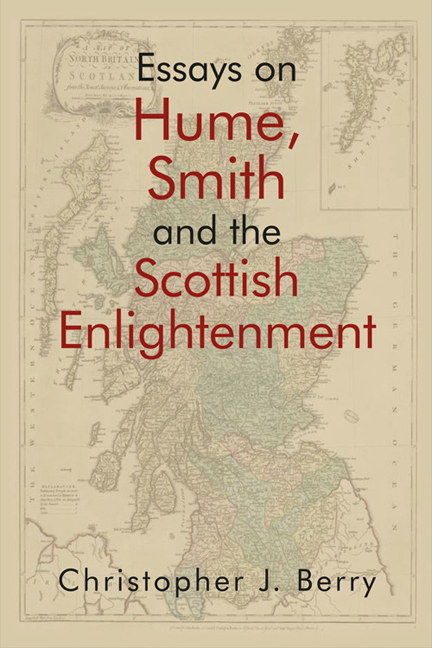Introduction to Part III
Published online by Cambridge University Press: 06 May 2021
Summary
The theme that runs through this third part of the book is Adam Smith as a self-conscious thinker of modernity. This reflects my view of his thought as engaging in the same sort of enterprise as that carried out by Hume. In particular, I see Smith, too, committed to a ‘science of man’ (see Chapters 17 and 20). This commitment runs across the whole of his thought (discernible in Chapter 16). Part III includes two previously unpublished essays. They elaborate on the argument of Chapter 18, a relatively early exposition.
As Smith made explicit in the subtitle added to the third edition, his Theory of Moral Sentiments is an ‘analysis’ of ‘principles’. Despite the occasional lament, it is not a moralising tract. This helps to explain my recurrence to his essentially negative view of the Stoics. As with the Hume essays in Part II, these are selective. Smith is a major (if far from sole) presence in Berry 2013, so there is no discussion here, except by inference, of his economic and moral arguments (discussed in my forthcoming book A Very Short Introduction to Adam Smith (Oxford University Press), written for a non-academic audience).
- Type
- Chapter
- Information
- Publisher: Edinburgh University PressPrint publication year: 2018



